-
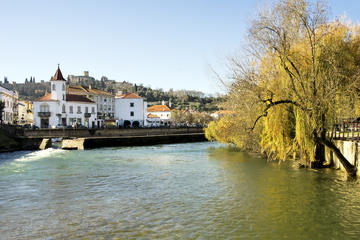 Tomar
Tomar Though at first it seems like nothing more than a charming small town, Tomar packs much historical significance for Portugal. Situated on the banks of the Nabão River, it is home to the impressive Castle of Tomar and the Convent of Christ, a UNESCO World Heritage site. Constructed in the 12
Tomar
Tomar Though at first it seems like nothing more than a charming small town, Tomar packs much historical significance for Portugal. Situated on the banks of the Nabão River, it is home to the impressive Castle of Tomar and the Convent of Christ, a UNESCO World Heritage site. Constructed in the 12
-
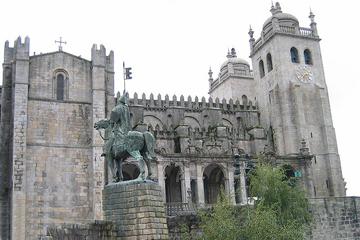 Porto Se Cathedral
Porto Se Cathedral Originally a Romanesque church from the 12th century, the Porto Se Cathedral was rebuilt with a Gothic style about 600 years later. Like other major churches in northern Portugal, this twin-towered cathedral boasts remodeling design by the famed Italian architect and painter Nic
Porto Se Cathedral
Porto Se Cathedral Originally a Romanesque church from the 12th century, the Porto Se Cathedral was rebuilt with a Gothic style about 600 years later. Like other major churches in northern Portugal, this twin-towered cathedral boasts remodeling design by the famed Italian architect and painter Nic
-
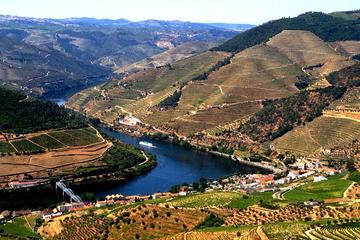 Douro River
Douro River The Douro is one of the Iberian Peninsula’s major rivers, flowing from Duruelo de la Sierra in northern Spain and emptying itself into the Atlantic at Porto. It has been shaping the harsh landscape of the Douro region since time immemorial, sculpting and irrigating its riverbanks to su
Douro River
Douro River The Douro is one of the Iberian Peninsula’s major rivers, flowing from Duruelo de la Sierra in northern Spain and emptying itself into the Atlantic at Porto. It has been shaping the harsh landscape of the Douro region since time immemorial, sculpting and irrigating its riverbanks to su
-
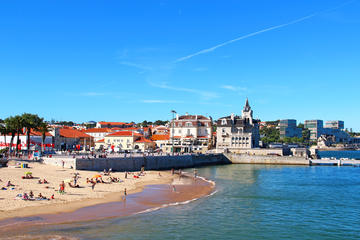 Cascais
Cascais Located west of Lisbon on the Estoril coast, the once-sleepy fishing village of Cascais has become the summer playground of city dwellers, adored for its glorious string of sandy bays and the spanking new marina. Although the beaches pose the main attraction in Cascais, it’s worth popping
Cascais
Cascais Located west of Lisbon on the Estoril coast, the once-sleepy fishing village of Cascais has become the summer playground of city dwellers, adored for its glorious string of sandy bays and the spanking new marina. Although the beaches pose the main attraction in Cascais, it’s worth popping
-
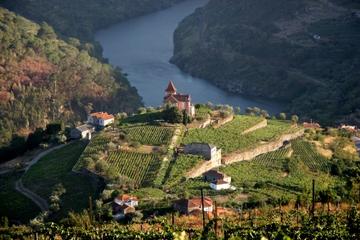 Douro
Douro The Douro region in Northeast Portugal is near the border with Spain. Even with the advent of modern civilization, this area is characterized by a sort of frontier spirit that tenaciously preserves a traditional way of life handed down through many, many years. Thinly populated and remote, t
Douro
Douro The Douro region in Northeast Portugal is near the border with Spain. Even with the advent of modern civilization, this area is characterized by a sort of frontier spirit that tenaciously preserves a traditional way of life handed down through many, many years. Thinly populated and remote, t
-
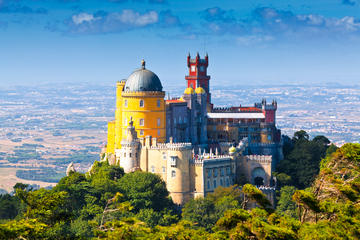 Pena National Palace
Pena National Palace Technically, UNESCO considers the entire cultural landscape of Sintra the World Heritage Site here, but the crown jewel is the royal Pena National Palace. Considered the greatest example of 19th-century Romanticism in the world, the palace sprawls on a hilltop high above Sintr
Pena National Palace
Pena National Palace Technically, UNESCO considers the entire cultural landscape of Sintra the World Heritage Site here, but the crown jewel is the royal Pena National Palace. Considered the greatest example of 19th-century Romanticism in the world, the palace sprawls on a hilltop high above Sintr
-
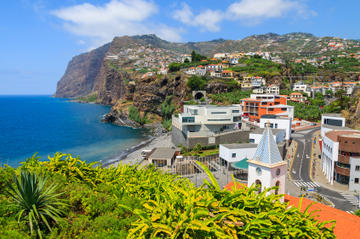 Cabo Girao
Cabo Girao In 2012 a glass-floored viewing platform was installed in this already-popular lofty sea cliff on the southern coast of Madeira, making it an even more popular destination for visitors to this scenic island. While the glass observation ledge can be unnerving for those afraid of heights,
Cabo Girao
Cabo Girao In 2012 a glass-floored viewing platform was installed in this already-popular lofty sea cliff on the southern coast of Madeira, making it an even more popular destination for visitors to this scenic island. While the glass observation ledge can be unnerving for those afraid of heights,
-
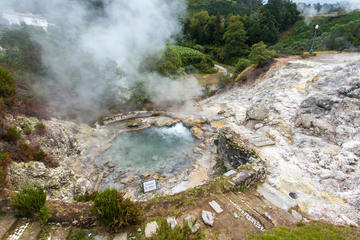 Furnas
Furnas An ancient volcanic zone that has been active for more than 100,000 years, Furnas is a hotbed of thermal activity. The lush area has been attracting spa visitors seeking the water’s healing properties since the 19th century. Close to three active volcanos, citizens of the Portuguese parish
Furnas
Furnas An ancient volcanic zone that has been active for more than 100,000 years, Furnas is a hotbed of thermal activity. The lush area has been attracting spa visitors seeking the water’s healing properties since the 19th century. Close to three active volcanos, citizens of the Portuguese parish
-
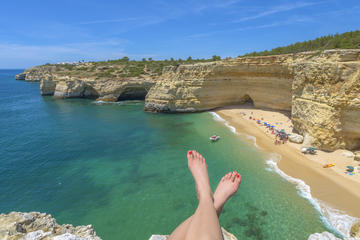 Albufeira
Albufeira Little more than a fishing village at the beginning of the 1960s, Albufeira is now the busiest vacation resort along the Algarve, which runs in a necklace of sandy beaches and pretty towns along the south coast of Portugal. It’s a cultured city with roots that stretch back to Roman times
Albufeira
Albufeira Little more than a fishing village at the beginning of the 1960s, Albufeira is now the busiest vacation resort along the Algarve, which runs in a necklace of sandy beaches and pretty towns along the south coast of Portugal. It’s a cultured city with roots that stretch back to Roman times
-
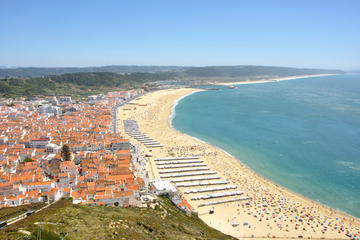 Nazaré
Nazaré The Estremadura town of Nazaré hugs the western Atlantic coast, a traditional Portuguese fishing village turned popular summer resort and surfer’s paradise. The long sweep of sandy beach is backed by a long esplanade and a cute white-washed, red-roofed town. The protected harbor at the sout
Nazaré
Nazaré The Estremadura town of Nazaré hugs the western Atlantic coast, a traditional Portuguese fishing village turned popular summer resort and surfer’s paradise. The long sweep of sandy beach is backed by a long esplanade and a cute white-washed, red-roofed town. The protected harbor at the sout
-
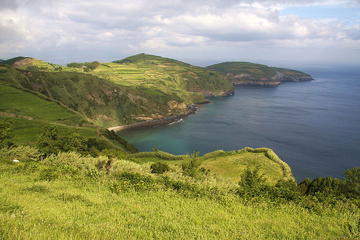 The Azores
The Azores The mystical Azores, nine isolated islands rising steeply from the tectonic center of the Atlantic Ocean, are a destination for the truly adventurous. Alive with hot springs, crater lakes, and endless, achingly beautiful vistas across the waves and mountains, this is another world. Perh
The Azores
The Azores The mystical Azores, nine isolated islands rising steeply from the tectonic center of the Atlantic Ocean, are a destination for the truly adventurous. Alive with hot springs, crater lakes, and endless, achingly beautiful vistas across the waves and mountains, this is another world. Perh
-
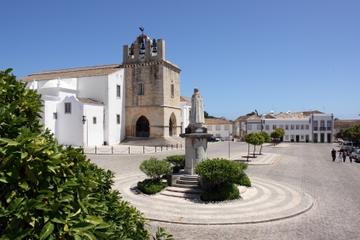 Faro
Faro Faro is home to about 55,000 people, but despite its relatively small size, it is the administrative center of the Algarve region. Prior to its modern incarnation, Faro was occupied by the Romans and then later the Moors, serving as a trading hub for both; ruins of both invading civilizations
Faro
Faro Faro is home to about 55,000 people, but despite its relatively small size, it is the administrative center of the Algarve region. Prior to its modern incarnation, Faro was occupied by the Romans and then later the Moors, serving as a trading hub for both; ruins of both invading civilizations
-
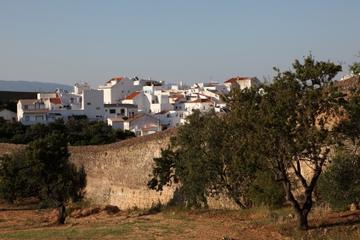 Lagos
Lagos Originally named Lacobriga by the Romans and then Zawaia by the Moors, Lagos was settled prior to the Roman’s conquest of Iberia, due to its natural river port and proximity to the sea. Its modern area actually began in 1249 when Dom Afonso III made it part of the Portuguese kingdom, and fro
Lagos
Lagos Originally named Lacobriga by the Romans and then Zawaia by the Moors, Lagos was settled prior to the Roman’s conquest of Iberia, due to its natural river port and proximity to the sea. Its modern area actually began in 1249 when Dom Afonso III made it part of the Portuguese kingdom, and fro
-
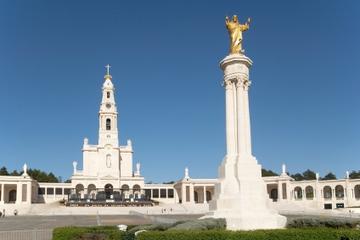 Fátima
Fátima Fátima, located 88 miles (142 kilometers) north of Lisbon is one of the most important shrines to the Virgin Mary in the world. Here, in 1917, she appeared several times to three shepherd children. The last time, on October 13th 1917, there were 70,000 witnesses to the miracle. A marble pil
Fátima
Fátima Fátima, located 88 miles (142 kilometers) north of Lisbon is one of the most important shrines to the Virgin Mary in the world. Here, in 1917, she appeared several times to three shepherd children. The last time, on October 13th 1917, there were 70,000 witnesses to the miracle. A marble pil
-
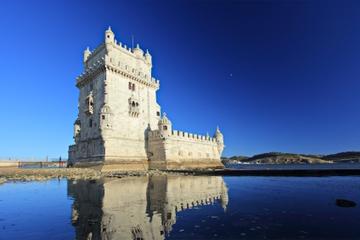 Belém Tower (Torre de Belém)
Belém Tower (Torre de Belém) Portugals caravels sailed off to conquer the great unknown from Belém, and today this leafy riverside precinct is a giant monument to the nations Age of Discoveries. Belém Tower, or Torre de Belém, the much-photographed symbol of Portugals maritime glory, is a stone fo
Belém Tower (Torre de Belém)
Belém Tower (Torre de Belém) Portugals caravels sailed off to conquer the great unknown from Belém, and today this leafy riverside precinct is a giant monument to the nations Age of Discoveries. Belém Tower, or Torre de Belém, the much-photographed symbol of Portugals maritime glory, is a stone fo
-
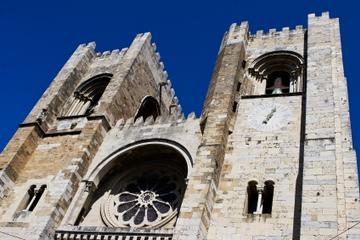 Lisbon Cathedral (Sé de Lisboa)
Lisbon Cathedral (Sé de Lisboa) An austere Romanesque building from the outside, the Lisbon Cathedral (Sé de Lisboa) has some lovely treasures inside. It dates from 1150 and was built this solidly to repel attacks from the Moors. It didnt do much to ward off earthquake damage in 1344 and 1755 and
Lisbon Cathedral (Sé de Lisboa)
Lisbon Cathedral (Sé de Lisboa) An austere Romanesque building from the outside, the Lisbon Cathedral (Sé de Lisboa) has some lovely treasures inside. It dates from 1150 and was built this solidly to repel attacks from the Moors. It didnt do much to ward off earthquake damage in 1344 and 1755 and
-
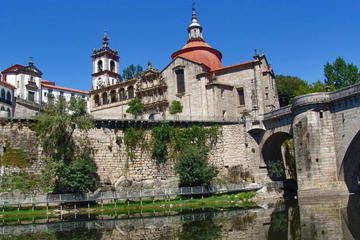 Amarante
Amarante Allegedly established by a Roman centurion named Amarantus, Amarante is situated between the steep sides of Serra do Marão and the curves of the river Tâmega, the longest tributary of the river Douro. Modern Amarante is actually rooted in the 13th century, when the Benedictine monk St. Go
Amarante
Amarante Allegedly established by a Roman centurion named Amarantus, Amarante is situated between the steep sides of Serra do Marão and the curves of the river Tâmega, the longest tributary of the river Douro. Modern Amarante is actually rooted in the 13th century, when the Benedictine monk St. Go
-
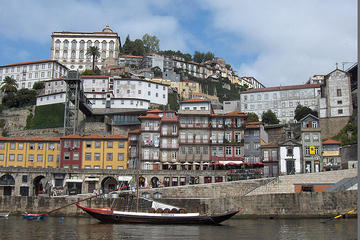 Ribeira District
Ribeira District Many of Europe’s great cities have an old quarter, the original part of town from which centuries of cosmopolitan evolution spread outward. In Porto, the old town is known as The Ribeira, as it looks out onto the River Douro. In days past, it was once the major entrepot for intern
Ribeira District
Ribeira District Many of Europe’s great cities have an old quarter, the original part of town from which centuries of cosmopolitan evolution spread outward. In Porto, the old town is known as The Ribeira, as it looks out onto the River Douro. In days past, it was once the major entrepot for intern
-
 Casa Santa Eulalia
Sorry, we currently have no review for this sight.
Casa Santa Eulalia
Sorry, we currently have no review for this sight.
-
 Sala dos Capelos
Sorry, we currently have no review for this sight.
Sala dos Capelos
Sorry, we currently have no review for this sight.
Total
723 -travel
FirstPage PreviousPage NextPage LastPage CurrentPage:
8/37 20-travel/Page GoTo Page:
 Tomar
Tomar Though at first it seems like nothing more than a charming small town, Tomar packs much historical significance for Portugal. Situated on the banks of the Nabão River, it is home to the impressive Castle of Tomar and the Convent of Christ, a UNESCO World Heritage site. Constructed in the 12
Tomar
Tomar Though at first it seems like nothing more than a charming small town, Tomar packs much historical significance for Portugal. Situated on the banks of the Nabão River, it is home to the impressive Castle of Tomar and the Convent of Christ, a UNESCO World Heritage site. Constructed in the 12
 Porto Se Cathedral
Porto Se Cathedral Originally a Romanesque church from the 12th century, the Porto Se Cathedral was rebuilt with a Gothic style about 600 years later. Like other major churches in northern Portugal, this twin-towered cathedral boasts remodeling design by the famed Italian architect and painter Nic
Porto Se Cathedral
Porto Se Cathedral Originally a Romanesque church from the 12th century, the Porto Se Cathedral was rebuilt with a Gothic style about 600 years later. Like other major churches in northern Portugal, this twin-towered cathedral boasts remodeling design by the famed Italian architect and painter Nic
 Douro River
Douro River The Douro is one of the Iberian Peninsula’s major rivers, flowing from Duruelo de la Sierra in northern Spain and emptying itself into the Atlantic at Porto. It has been shaping the harsh landscape of the Douro region since time immemorial, sculpting and irrigating its riverbanks to su
Douro River
Douro River The Douro is one of the Iberian Peninsula’s major rivers, flowing from Duruelo de la Sierra in northern Spain and emptying itself into the Atlantic at Porto. It has been shaping the harsh landscape of the Douro region since time immemorial, sculpting and irrigating its riverbanks to su
 Cascais
Cascais Located west of Lisbon on the Estoril coast, the once-sleepy fishing village of Cascais has become the summer playground of city dwellers, adored for its glorious string of sandy bays and the spanking new marina. Although the beaches pose the main attraction in Cascais, it’s worth popping
Cascais
Cascais Located west of Lisbon on the Estoril coast, the once-sleepy fishing village of Cascais has become the summer playground of city dwellers, adored for its glorious string of sandy bays and the spanking new marina. Although the beaches pose the main attraction in Cascais, it’s worth popping
 Douro
Douro The Douro region in Northeast Portugal is near the border with Spain. Even with the advent of modern civilization, this area is characterized by a sort of frontier spirit that tenaciously preserves a traditional way of life handed down through many, many years. Thinly populated and remote, t
Douro
Douro The Douro region in Northeast Portugal is near the border with Spain. Even with the advent of modern civilization, this area is characterized by a sort of frontier spirit that tenaciously preserves a traditional way of life handed down through many, many years. Thinly populated and remote, t
 Pena National Palace
Pena National Palace Technically, UNESCO considers the entire cultural landscape of Sintra the World Heritage Site here, but the crown jewel is the royal Pena National Palace. Considered the greatest example of 19th-century Romanticism in the world, the palace sprawls on a hilltop high above Sintr
Pena National Palace
Pena National Palace Technically, UNESCO considers the entire cultural landscape of Sintra the World Heritage Site here, but the crown jewel is the royal Pena National Palace. Considered the greatest example of 19th-century Romanticism in the world, the palace sprawls on a hilltop high above Sintr
 Cabo Girao
Cabo Girao In 2012 a glass-floored viewing platform was installed in this already-popular lofty sea cliff on the southern coast of Madeira, making it an even more popular destination for visitors to this scenic island. While the glass observation ledge can be unnerving for those afraid of heights,
Cabo Girao
Cabo Girao In 2012 a glass-floored viewing platform was installed in this already-popular lofty sea cliff on the southern coast of Madeira, making it an even more popular destination for visitors to this scenic island. While the glass observation ledge can be unnerving for those afraid of heights,
 Furnas
Furnas An ancient volcanic zone that has been active for more than 100,000 years, Furnas is a hotbed of thermal activity. The lush area has been attracting spa visitors seeking the water’s healing properties since the 19th century. Close to three active volcanos, citizens of the Portuguese parish
Furnas
Furnas An ancient volcanic zone that has been active for more than 100,000 years, Furnas is a hotbed of thermal activity. The lush area has been attracting spa visitors seeking the water’s healing properties since the 19th century. Close to three active volcanos, citizens of the Portuguese parish
 Albufeira
Albufeira Little more than a fishing village at the beginning of the 1960s, Albufeira is now the busiest vacation resort along the Algarve, which runs in a necklace of sandy beaches and pretty towns along the south coast of Portugal. It’s a cultured city with roots that stretch back to Roman times
Albufeira
Albufeira Little more than a fishing village at the beginning of the 1960s, Albufeira is now the busiest vacation resort along the Algarve, which runs in a necklace of sandy beaches and pretty towns along the south coast of Portugal. It’s a cultured city with roots that stretch back to Roman times
 Nazaré
Nazaré The Estremadura town of Nazaré hugs the western Atlantic coast, a traditional Portuguese fishing village turned popular summer resort and surfer’s paradise. The long sweep of sandy beach is backed by a long esplanade and a cute white-washed, red-roofed town. The protected harbor at the sout
Nazaré
Nazaré The Estremadura town of Nazaré hugs the western Atlantic coast, a traditional Portuguese fishing village turned popular summer resort and surfer’s paradise. The long sweep of sandy beach is backed by a long esplanade and a cute white-washed, red-roofed town. The protected harbor at the sout
 The Azores
The Azores The mystical Azores, nine isolated islands rising steeply from the tectonic center of the Atlantic Ocean, are a destination for the truly adventurous. Alive with hot springs, crater lakes, and endless, achingly beautiful vistas across the waves and mountains, this is another world. Perh
The Azores
The Azores The mystical Azores, nine isolated islands rising steeply from the tectonic center of the Atlantic Ocean, are a destination for the truly adventurous. Alive with hot springs, crater lakes, and endless, achingly beautiful vistas across the waves and mountains, this is another world. Perh
 Faro
Faro Faro is home to about 55,000 people, but despite its relatively small size, it is the administrative center of the Algarve region. Prior to its modern incarnation, Faro was occupied by the Romans and then later the Moors, serving as a trading hub for both; ruins of both invading civilizations
Faro
Faro Faro is home to about 55,000 people, but despite its relatively small size, it is the administrative center of the Algarve region. Prior to its modern incarnation, Faro was occupied by the Romans and then later the Moors, serving as a trading hub for both; ruins of both invading civilizations
 Lagos
Lagos Originally named Lacobriga by the Romans and then Zawaia by the Moors, Lagos was settled prior to the Roman’s conquest of Iberia, due to its natural river port and proximity to the sea. Its modern area actually began in 1249 when Dom Afonso III made it part of the Portuguese kingdom, and fro
Lagos
Lagos Originally named Lacobriga by the Romans and then Zawaia by the Moors, Lagos was settled prior to the Roman’s conquest of Iberia, due to its natural river port and proximity to the sea. Its modern area actually began in 1249 when Dom Afonso III made it part of the Portuguese kingdom, and fro
 Fátima
Fátima Fátima, located 88 miles (142 kilometers) north of Lisbon is one of the most important shrines to the Virgin Mary in the world. Here, in 1917, she appeared several times to three shepherd children. The last time, on October 13th 1917, there were 70,000 witnesses to the miracle. A marble pil
Fátima
Fátima Fátima, located 88 miles (142 kilometers) north of Lisbon is one of the most important shrines to the Virgin Mary in the world. Here, in 1917, she appeared several times to three shepherd children. The last time, on October 13th 1917, there were 70,000 witnesses to the miracle. A marble pil
 Belém Tower (Torre de Belém)
Belém Tower (Torre de Belém) Portugals caravels sailed off to conquer the great unknown from Belém, and today this leafy riverside precinct is a giant monument to the nations Age of Discoveries. Belém Tower, or Torre de Belém, the much-photographed symbol of Portugals maritime glory, is a stone fo
Belém Tower (Torre de Belém)
Belém Tower (Torre de Belém) Portugals caravels sailed off to conquer the great unknown from Belém, and today this leafy riverside precinct is a giant monument to the nations Age of Discoveries. Belém Tower, or Torre de Belém, the much-photographed symbol of Portugals maritime glory, is a stone fo
 Lisbon Cathedral (Sé de Lisboa)
Lisbon Cathedral (Sé de Lisboa) An austere Romanesque building from the outside, the Lisbon Cathedral (Sé de Lisboa) has some lovely treasures inside. It dates from 1150 and was built this solidly to repel attacks from the Moors. It didnt do much to ward off earthquake damage in 1344 and 1755 and
Lisbon Cathedral (Sé de Lisboa)
Lisbon Cathedral (Sé de Lisboa) An austere Romanesque building from the outside, the Lisbon Cathedral (Sé de Lisboa) has some lovely treasures inside. It dates from 1150 and was built this solidly to repel attacks from the Moors. It didnt do much to ward off earthquake damage in 1344 and 1755 and
 Amarante
Amarante Allegedly established by a Roman centurion named Amarantus, Amarante is situated between the steep sides of Serra do Marão and the curves of the river Tâmega, the longest tributary of the river Douro. Modern Amarante is actually rooted in the 13th century, when the Benedictine monk St. Go
Amarante
Amarante Allegedly established by a Roman centurion named Amarantus, Amarante is situated between the steep sides of Serra do Marão and the curves of the river Tâmega, the longest tributary of the river Douro. Modern Amarante is actually rooted in the 13th century, when the Benedictine monk St. Go
 Ribeira District
Ribeira District Many of Europe’s great cities have an old quarter, the original part of town from which centuries of cosmopolitan evolution spread outward. In Porto, the old town is known as The Ribeira, as it looks out onto the River Douro. In days past, it was once the major entrepot for intern
Ribeira District
Ribeira District Many of Europe’s great cities have an old quarter, the original part of town from which centuries of cosmopolitan evolution spread outward. In Porto, the old town is known as The Ribeira, as it looks out onto the River Douro. In days past, it was once the major entrepot for intern
 Casa Santa Eulalia
Sorry, we currently have no review for this sight.
Casa Santa Eulalia
Sorry, we currently have no review for this sight.
 Sala dos Capelos
Sorry, we currently have no review for this sight.
Sala dos Capelos
Sorry, we currently have no review for this sight.